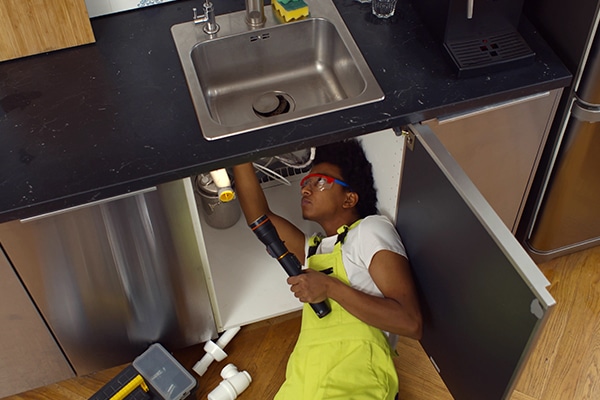A Detailed Guide to Efficient Hot Water Heater Installment for Optimum Efficiency
Embarking on the task of mounting a hot water heater is a venture that requires precision and a systematic approach for attaining ideal performance. The procedure begins with the critical choice of choosing the ideal heating unit tailored to the details requirements of your household, thinking about elements such as energy, type, and dimension resource. Once picked, preparing the setup location to satisfy safety criteria is vital. The trip doesn't end below. As you proceed, the details of linking water supply lines and establishing trustworthy electrical or gas links await, encouraging insights right into guaranteeing performance and dependability.
Picking the Right Water Heater

Following, take into consideration the size and capacity of the hot water heater. It's essential to assess your house's warm water needs, which can vary based on the number of residents and their usage patterns. A system that's as well little may result in inadequate warm water, while a large design might lead to unneeded energy usage.
Effectiveness scores likewise play a critical function in selection. Search for water heating units with high Energy Factor (EF) ratings, indicating superior performance and reduced power use. Tankless versions, though commonly extra pricey in advance, offer substantial energy financial savings with time because of their on-demand heating capabilities.
Preparing the Installation Location
Prior to setting up a new hot water heater, meticulous prep work of the installment area is vital. This guarantees a smooth installation procedure and aids stop future issues (Water Heater installation Alabaster AL). Begin by choosing a suitable location that follows regional building regulations and security standards. The location must be dry, well-ventilated, and available for maintenance. It's crucial to gauge the area thoroughly to suit the water heating system's dimensions, ensuring ample clearance around the system for reliable procedure and maintenance.
Check the flooring for security, as the water heating system will certainly need a solid, level surface to run properly. If needed, set up a drip pan below the unit to catch potential leakages or spills, protecting against water damages to the surrounding area.
Additionally, guarantee that all necessary devices and products are on hand before commencing the installment. This consists of products such as wrenches, screwdrivers, a degree, and any type of additional equipment needed for securing the heater and placing. A well-prepared setup area sets the structure for an effective hot water heater arrangement, enhancing efficiency and security.
Connecting Supply Of Water Lines
When connecting water lines to your recently installed hot water heater, it is essential to make sure that all connections are leak-free and protected to keep effective procedure and avoid water damages. Begin by determining the warm and cold water lines. The chilly water inlet is typically marked with a blue tag or a "C", while the hot water electrical outlet is marked with a red label or an "H".
Usage flexible water heater adapters to facilitate a simpler setup procedure. Prior to attaching the connectors, put a plumbing technician's tape around the threaded ends of the water heating system's inlet and electrical outlet pipelines.
As soon as connections are in place, slowly switch on the primary water shutoff. Inspect each connection for leaks by visually checking and feeling for wetness. Tighten connections as required, and make sure the stress alleviation shutoff is properly set up, protecting against extreme pressure build-up.
Setting Up Electrical or Gas Connections
Appropriately setting up the electric or gas connections for your water heating system is an important step to make sure efficient and secure operation. For electrical great site water heaters, start by verifying that the electrical circuit is suitable with the heater's voltage and amperage needs.
For gas water heating units, safety and security is paramount. Link the gas line to the water heating system making use of a flexible gas port, ensuring it is appropriately threaded and sealed with pipe joint substance or Teflon check tape ideal for gas links.
Once connections are made, check for any kind of possible leaks. For gas lines, apply a soapy water service to the joints; bubbles suggest a leak. For electric links, ascertain that all circuitry is secure and properly insulated, preserving compliance with regional electrical codes.
Changing and checking for Effectiveness
With the electric and gas connections securely in area, the following step is evaluating the functional effectiveness of your water heating unit. Begin by thoroughly transforming on the water supply and making certain there are no leakages at any of the shutoffs or joints.
Following, carry out a detailed assessment to guarantee the heating components or burner are operating appropriately. For electric heating systems, use a multimeter to verify if the components are drawing the appropriate present. In gas models, observe the heater flame; it needs to be blue and consistent, showing efficient burning.
Adjust the setups as necessary to remove inefficiencies. Take into consideration executing insulation actions, such as adding a water heating system blanket, to better enhance efficiency by minimizing warm loss. In addition, check the anode pole's problem, as a scrubby pole can decrease performance and lead to storage tank deterioration.
Conclusion
Effective water heating unit installment is critical for making certain optimum efficiency and power financial savings. Firmly attaching water supply lines and meticulously establishing up electric or investigate this site gas links decrease possible concerns.

Appropriately establishing up the electric or gas links for your water heating system is a crucial step to ensure secure and effective operation. For electric water heating units, begin by verifying that the electrical circuit is compatible with the heater's voltage and amperage requirements. Connect the gas line to the water heater using an adaptable gas adapter, guaranteeing it is appropriately threaded and sealed with pipe joint compound or Teflon tape suitable for gas links.